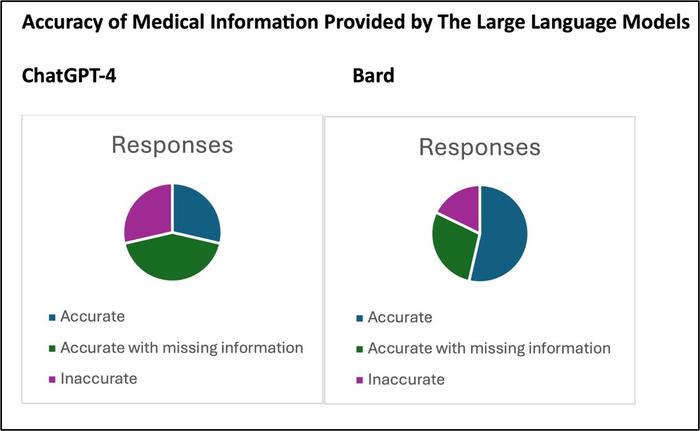True progression or pseudoprogression in glioblastoma patients?
MIAMI, FLORIDA (STRICTLY EMBARGOED UNTIL SEPT. 29, 2023 AT 5PM ET) – Is it true progression or pseudoprogression in tumor growth? Credit: Photo by Sylvester MIAMI, FLORIDA (STRICTLY EMBARGOED UNTIL SEPT. 29, 2023 AT 5PM ET) – Is it true progression or pseudoprogression in tumor growth? That’s the critical question for radiation and medical oncologists […]

MIAMI, FLORIDA (STRICTLY EMBARGOED UNTIL SEPT. 29, 2023 AT 5PM ET) – Is it true progression or pseudoprogression in tumor growth?

Credit: Photo by Sylvester
MIAMI, FLORIDA (STRICTLY EMBARGOED UNTIL SEPT. 29, 2023 AT 5PM ET) – Is it true progression or pseudoprogression in tumor growth?
That’s the critical question for radiation and medical oncologists treating patients with glioblastoma, the most common and aggressive form of brain cancer. Distinguishing between these types of progression is vitally important for treatment management.
“Knowing if it’s true progression, indicative of a poor response to treatment, or pseudoprogression, a favorable response that may look worse due to swelling or tumor necrosis, is essential for clinicians,” said Eric Mellon, MD, PhD, a radiation oncologist and researcher with Sylvester Comprehensive Cancer Center at the University of Miami Miller School of Medicine. “That knowledge can guide us in adjusting current treatment in real time.”
He and his research colleagues are presenting results from two recent studies on this topic at ASTRO 2023, the annual meeting of the American Society for Radiation Oncology, Oct. 1-4, in San Diego.
One study was designed to determine if daily monitoring of tumor changes during a course of radiation therapy could result in early prediction of treatment response. The MRI-guided linear accelerator systems, known as MR-linac, that deliver radiation therapy allow for this type of monitoring and detection of patterns within these volume changes.
Sylvester researchers used sophisticated analytical and machine learning tools, including a linear fitting model to test their prediction theory on a prospective cohort of glioblastoma patients undergoing chemoradiation for their cancers.
“The model was trained to predict between no progression, pseudoprogression and true progression, and the results were cross-validated,” explained Kaylie Cullison, an MD/PhD student who is conducting her PhD research in Mellon’s Sylvester laboratory, is the study’s first author, and will present the data at ASTRO 2023.
Of the 28 patients analyzed in the study, 11 had no tumor growth on first diagnostic MRI after treatment (no progression), five were found to have pseudoprogression based on long-term stability of MRI findings, and 12 had true progression determined by continuing tumor growth beyond six months, tissue sampling showing active malignancy or rapid death.
The model achieved an overall accuracy of 86%, when predicting three outcome classes (no progression, true progression and pseudoprogression), and an accuracy of 93% when predicting between no progression versus any kind of progression.
“We identified patterns of tumor behavior during therapy that were indicative of differences in growth patterns between true progression and pseudoprogression,” said Mellon, co-leader of Sylvester’s Neuro-Oncology Site Disease Group who leads numerous clinical trials for brain tumors. “These volume changes during treatment may be early markers of treatment response.”
Next steps, according to Mellon and Cullison, include automating real-time tumor monitoring by using a deep-learning solution for volume delineation on daily treatment scans.
Their other study, conducted simultaneously with the above one, sought to determine the predictive value of weekly delta-radiomic features extracted from MR-linac systems used for treating glioblastoma patients.
Whereas radiomics focus on quantitative features extracted from medical images to correlate with various biological features and clinical endpoints for cancer diagnosis, prognosis and clinical decisions, delta radiomics extend that analysis by examining feature variation at different time points, usually before and after therapy.
In this case, however, the acquisition time points were during therapy. Sylvester researchers deployed supervised machine learning with a sophisticated classification model to predict true progression or pseudoprogression outcomes. Their model included 41 variables – 39 tumor texture features plus lesion volume and mean lesion intensity – per time point to generate the predictions.
Of the 10 most prognostic features, 90% happened during an early time point, suggesting that prognostic changes in the underlying tumor microenvironment occur within the first 15 treatment sessions (or first half of treatment).
“Our findings support the theory that delta-radiomic features from MR-linac radiotherapy can predict treatment response during therapy, which is earlier than current methods,” concluded Mellon. “And doing so would allow physicians to intensify current treatment for poorly responding patients.”
Mellon and Cullison say future research should include a larger patient cohort and the use of MR-linac systems with multiparametric MRI to further test the model’s prognostic value.
# # #
What's Your Reaction?

































